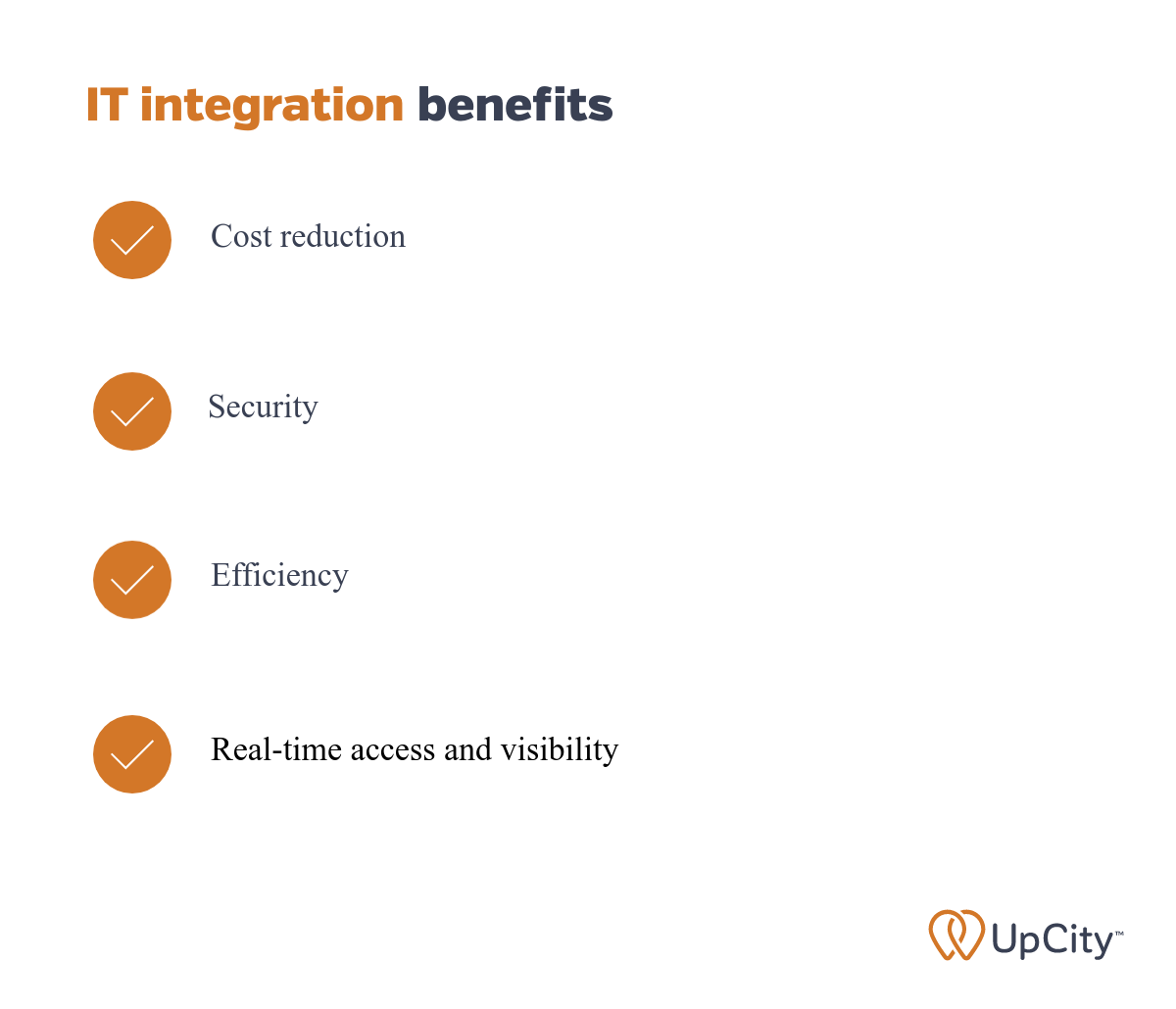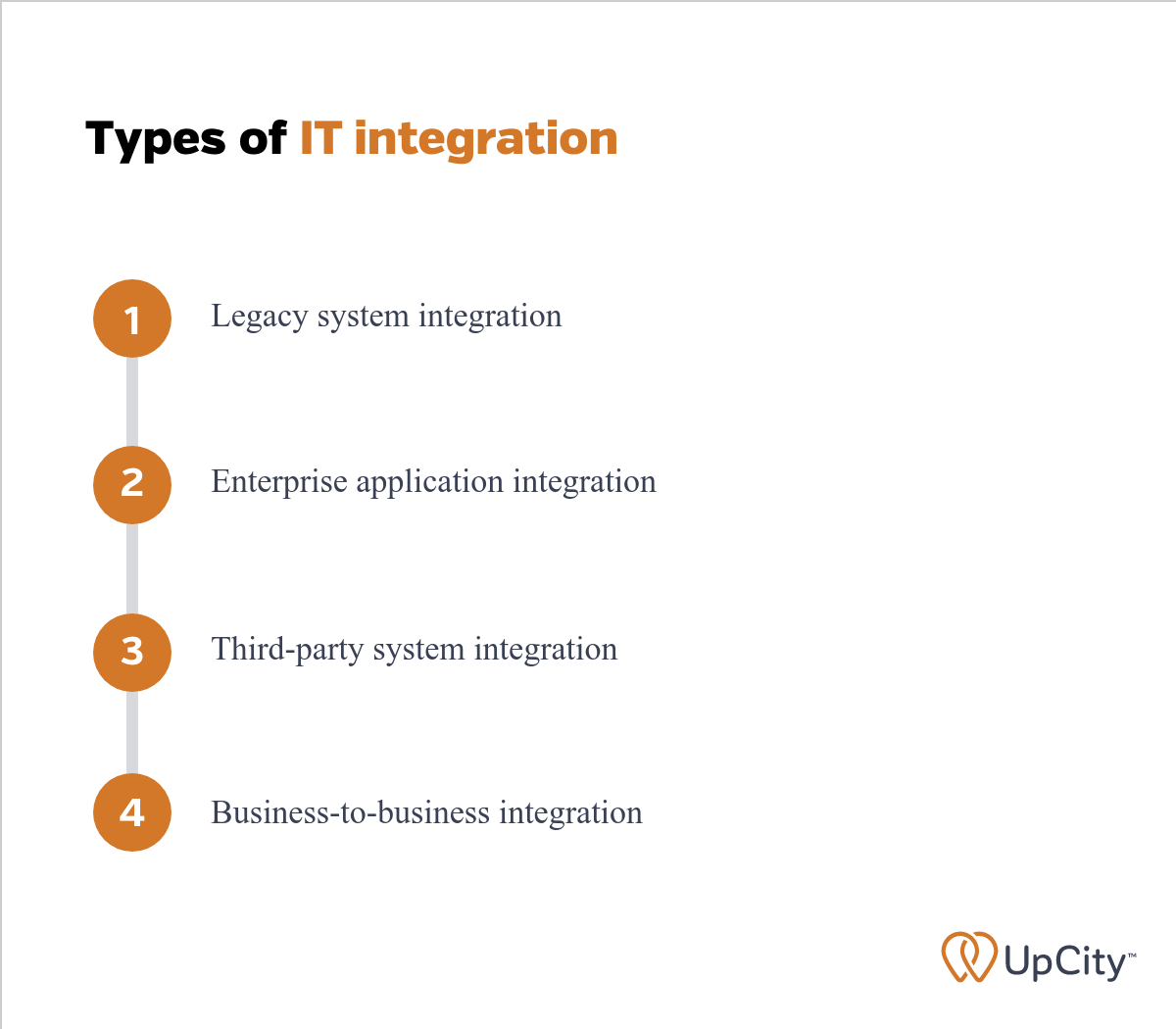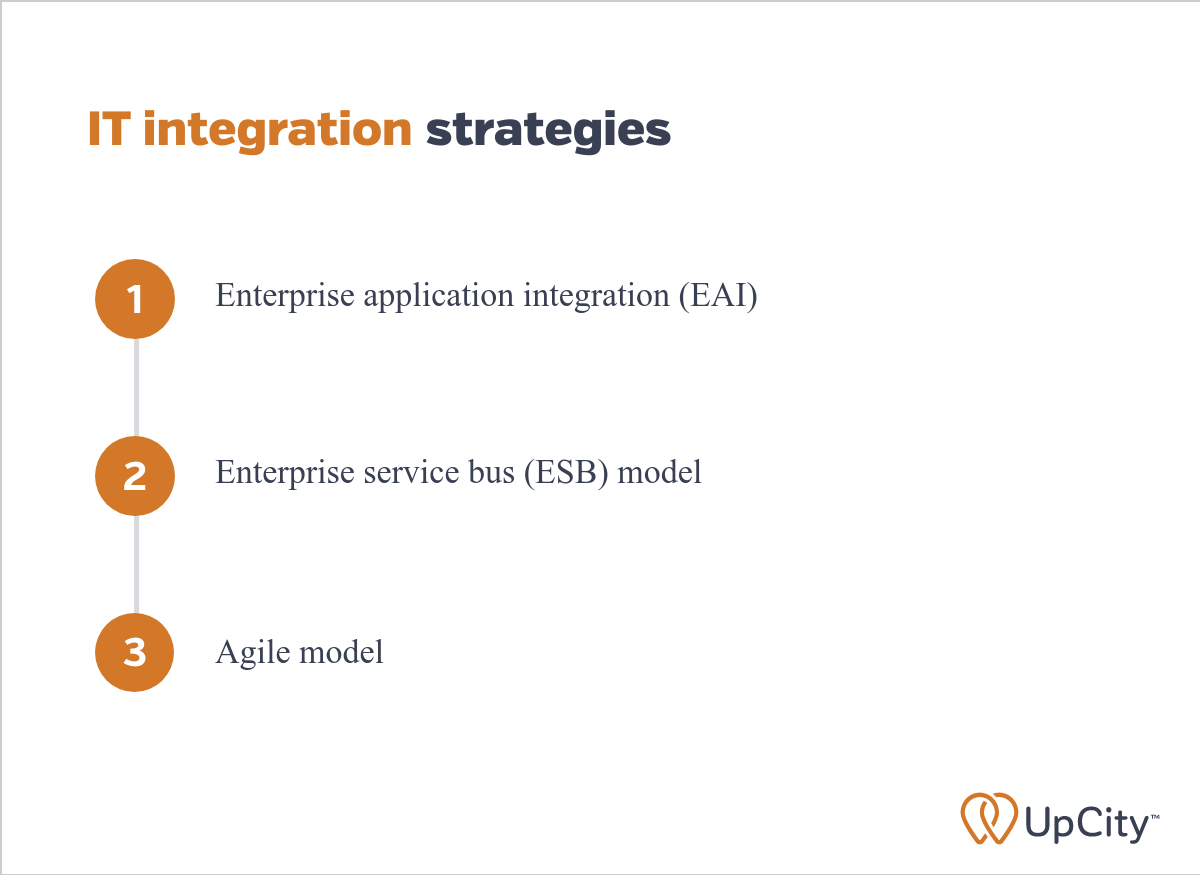At the beginning of the pandemic in 2020, the urgent need to be able to work remotely meant that companies and industries had to immediately adopt and integrate a large variety of new systems in order to survive.
However, as 34% of businesses have now mandated a return to office, and 63% have increased their expectations for their workforce to be in office, there is a need to assess and consolidate software purchases made in the past. [1] In fact, a recent survey from UpCity tells us that 84% of businesses have performed a software audit in the past 12 months, and 67% of businesses say their company has plans to consolidate software applications within the next 12 months.*
But whether you are a small-business owner or chief information security officer (CISO), how do you make sure that you are on top of what your business actually needs while ensuring that app sprawl is not slowing you down and that you are not losing money in the interim? Creating an IT integration plan is an efficient way of making sure you are keeping the software you need for your business to run smoothly, while shedding extra spending on what may not be useful anymore.
What is IT integration?
IT system integration is the process of creating a system that connects all of a company’s software, hardware, and data to streamline the amount of tools the company uses, all while making information and systems easily accessible to users.
It also allows for more efficient collaboration and communication between employees.
IT tool integration benefits

Cost reduction
As a small-business owner, it’s always important to think of ways to reduce costs wherever you can. By designing an IT system integration for your business, you will have less systems to operate, have less employee training needed, and lots of time saved through streamlined communication and collaboration—and in business, time is money. If you can reduce the amount of troubleshooting and training to one system, then you will be saving a lot of money for your business.
Security
As cybersecurity incidents, attacks, and breach events increase, it is important to think about security. While using ITSCM systems is a great way to help, we suggest using this checklist to ensure your security is up to date. The first thing to consider is the systems you are using and whether they are secure.
The second would be to consider whether you can streamline these systems, ideally combining them into one infrastructure, so you are able to have greater control. By using one system to integrate everything together, it is much easier to control the data, coding, and information that comes in and out. As a result, your security will be much tighter.
Efficiency
With cost reduction, time-saving measures, and more security, your business can run more efficiently, helping you to more quickly achieve your revenue projections. Staff become more empowered when they feel they can work with tools that help them be more productive. The less manual entry or workarounds that are needed, the easier it is for staff to achieve their key performance indicator (KPI) metrics and feel like a success.
Real-time access and visibility
When systems work together as an integration, then the data and information that comes in is more up to date and accurate so you can make more informed decisions. Nothing is more frustrating than pulling a report or reading a message after the information is no longer accurate. With IT integration strategies, a business will feel more in control of the growth of their business.
Types of IT integration
When choosing a type of integration for your business to work with, there are three options: They can range from using your current system to integrate applications into, creating new applications altogether, or looking to a vendor or third party to use their suite of software.

Legacy system integration
A legacy system integration allows you to integrate newer, more modern applications into your existing system. Most businesses trying to decide what integration type they should try will look at this option first.
It is usually the cheapest one in the short run but can be very expensive as your legacy system becomes increasingly outdated, and coding connections become more customized and layered. Eventually, you will need a whole new system, but if you choose to go with this type of integration, you will have to think about how long you can manage with this one at the outset.
Enterprise application integration
Enterprise application integration allows for a business to think big picture. Do you have multiple business units (BUs) or products that you want to measure differently, but all at the same time? This option allows for your business to oversee multiple BUs and also allows you to plan for the future and create new applications if you want to throw away your old integration system.
However, this can be more expensive, especially if you create applications for your business on a large scale.
Third-party system integration
There are a lot of applications out there that work really well, and you may want to use some of those applications within the system integration that you currently have. Third-party system integration is quite common through application programming interface (API) connections and can be done on a large scale, with many applications connected to each other, or on a small scale, with one or two apps.
Business-to-business integration
Depending on the type of business you own, you may want to consider a business-to-business integration system. This is a connection between two businesses and their enterprise resource planning (ERP) systems. This is especially helpful if you have a supplier or retailer that you work exclusively with or frequently enough that the integration would save you both time and money.
IT system integration strategies
There are three ways to approach your integration strategy: enterprise application integration, enterprise service bus, and agile integration. Let’s see what strategy will work best for you:

Enterprise application integration (EAI)
EAI implements real-time, message-based integration between applications that are triggered within the apps. There are two approaches: point-to-point and hub-and-spoke.
Point-to-point (P2P) model: This model approaches each application that you are using as individuals that can talk to all the other applications. Each pathway is customized for the connection made, meaning that you can basically connect any application or service to another because the code has been made just for that purpose.
This is a great option for a small to midsize business that does not anticipate growing any time soon or knows that it needs to update their technology in the near future. The downside of this model is that the code can become old fast as the applications themselves become updated, making use of the applications and services clunky.
Hub-and-spoke model: Instead of having each application talk to each other individually, this model has a central hub that handles the connections between all the applications. So as a message from one application goes in, the hub will take that information, translate it, and send it to the appropriate party for the operation to be completed.
This is a model that can be easily scaled up compared to the P2P model, ensures more security, and is overall simpler to implement. However, the centralized system can become a bottleneck of information and lead to slower timeframes as the hub works hard to get the information out.
Enterprise service bus (ESB) model
The enterprise service bus (ESB) model is very similar to the hub-and-spoke model. Different applications send their information to a centralized hub to be translated and sent off. However, ESB uses more open sourced standards and protocols that make it so the coding is easily updated, adaptable, and less customized. It is also typically a larger system approach, acting as an interface layer connecting other subsystems, instead of being a system all on its own.
The ESB model is certainly great for a business that knows it is growing soon and wants to ensure that everything is efficient, connected in real time, and is in-house. The downside to this model is that because the coding is based on open source software, by its very nature it is not flexible. It’s still a model that has a centralized source moving everything along.
Agile model
The last option is the Agile model. By definition, it means flexibility in the methodology. This model is a strategy of implementing changes and workability of your various systems but may not be the model in which all the interaction of the applications happens. In the Agile integration model, everything is broken down into smaller tasks that are known as sprints. Each sprint has a unique focus of integration, whether a code change or a new application added.
In this model, there is continuous integration and continuous deployment (CI/CD), as well as feedback loops. The information that is being implemented is tested and updated in real time so that there is no delay in systems working well together. This flexibility allows for different types of integration to take place depending on the needs of your business and the applications you want to use.
The Agile model has become popular not only in IT integration but in project management and product development. The downside of this model is that you need a fairly robust and organized team who can handle the updates as they come in and stay on schedule.
How can you leverage IT services for your IT integration strategy?
Implementing an IT integration strategy requires a comprehensive understanding of your organization’s current IT landscape, business goals, and the technologies available. Here’s how you can leverage IT services effectively:
- Assess: Begin by conducting a thorough assessment of your existing IT infrastructure, applications, and systems. Identify areas that need integration and prioritize them based on business impact and feasibility.
- Define your objectives: Clearly define the objectives of your IT integration strategy. Determine what you aim to achieve through integration, whether it’s streamlining processes, improving data accessibility, enhancing communication, or reducing costs.
- Establish data management: Establish data management policies and governance frameworks to ensure data consistency, quality, and security across integrated systems. Implement data integration techniques, data mapping, and data cleansing as needed.
- Security and compliance: Prioritize security and compliance throughout the integration process. Implement encryption, access controls, authentication mechanisms, and other security measures to protect sensitive data.
- Test: Conduct thorough testing of integrated systems to identify and resolve any compatibility issues, data discrepancies, or performance bottlenecks. Use techniques such as unit testing, integration testing, and user acceptance testing to validate the effectiveness of the integration solution.
- Monitor: Implement monitoring tools and performance metrics to continuously assess the effectiveness of your integration strategy. Monitor system health, data flows, and user feedback to identify areas for optimization and improvement. Regularly review and update your integration architecture to adapt to evolving business needs and technological advancements.
As a small-business owner, you are now armed with the tools to decide on your own IT integration strategy. By leveraging IT services effectively, you can design and implement an IT integration strategy that reduces app sprawl, saving you money and time.
You’ll enhance connectivity, streamline processes, and drive business value across your organization. [2] If you are not quite ready to undertake IT integration, IT integration service providers are able to assist you in strategizing and implementation.
Sources
- Why Return-to-Office Mandates Aren’t Worth the Steep Talent Risks, Gartner
- >Gartner’s Integration Capabilities Framework, Gartner
Methodology
*UpCity’s 2023 Marketing App Sprawl survey was conducted in March 2023 among 193 U.S. respondents to learn about their company’s software applications and redundancies. Respondents were screened to have marketing or advertising job roles or functions and have significant involvement in software purchases decisions. All respondents work for companies with 1 to 1,000 employees and annual revenues of up to $500 million USD.

